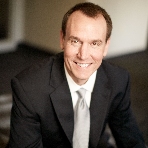- Siena Lending Group Transacted over $1B in Facilities in 2025
- Receivables Purchase and Asset-Based Lending: Insights from First Brands
- Karen Marino Joins JPalmer Collective as Head of Risk Management
- Back To The Future – The Advent Of Re-Shoring And Its Impact On Secured Financing
- M&A Market Set to Broaden as Confidence Surges
An Interview with Doug Winget, Executive Vice President, Huntington National Bank and President, Huntington Business Credit
December 13, 2021
By Charlie Perer

(Pictured: Doug Winget)
In this installment of our series of executive interviews, Charlie Perer sits with Doug Winget to discuss Huntington Business Credit’s national expansion, vertical industry specialization and state of the market, among other things.
Charlie Perer: Thank you for your time, Doug. To begin, can you please talk briefly about your background?
Doug Winget: I am president of Huntington Business Credit (“HBC"), the Asset-Based Lending group of Huntington National Bank. I joined Huntington via the acquisition of FirstMerit Bank in August 2016 to lead the combined Asset-Based Lending groups. Since joining, HBC has grown significantly to a national ABL lending group with commitments under management exceeding $5 billion. I have over 30+ years in commercial banking, of which the last 27 have been in ABL and the most recent 21 in a management role. Prior to joining Huntington, I founded and led the growth of FirstMerit Bank Business Credit as President and National City Business Credit as the National Manager of Business Development. Prior to NCBC, I was Midwest Regional Manager for PNC Business Credit. My career has been defined by building commercial finance businesses and I am now at a platform that enables our team to compete with the nation’s biggest banks.
Perer: Huntington Business Credit (“HBC”) recently hired a team on the West Coast to achieve national reach. Why was this so important to you?
Winget: National reach is very hard to achieve in our business, so the opportunity to add a very experienced ABL team that fit our credit culture on the West Coast was very attractive. Geographic extension of HBC was always a part of the long-term strategy and the opportunity to hire an experienced team made the timing perfect. We made the strategic decision to grow and achieve national scale while other banks were pulling back. The challenge in scaling is being able to keep the culture and credit discipline, which the HBC core team and I have established over the past 20 years.
Perer: Has national reach become table stakes for super regional bank-ABL groups or was it a tactic to create a competitive advantage?
Winget: Put simply, to do it properly is always the challenge and not easy work. Any bank (or non-bank) can easily try to establish a commercial finance group within a region or footprint, but to commit to growth in all the major regions, coast-to-coast, is difficult. However, the timing and the opportunity for HBC to establish a national market office footprint was tangential to HNB’s core growth strategy. A key driver to having a national footprint is that we increased the financing opportunities that fit the “go to market” underwriting strategy versus stretching to stay local and increase volume. Ultimately, we believe we are very well positioned to be able to compete nationally against bank and non-bank competitors.
Perer: How does a super regional group like yours differentiate its capabilities from the national bank-ABL groups and aggressive non-bank ABLs?
Winget: HBC’s “go to market” strategy is straightforward relationship banking with scale and access to decision makers that enables us to pick our spots of expertise and underwriting comfort. The senior management team has a 20+ year history together and with it comes credibility and confidence. The core team has been together since our NCBC days and the team leaders have now built their own teams. In the words of one of my favorite college football coaches, “You win with people”; so my best 10 people now have their best 10 people, which is how we have kept underwriting consistency and culture through growth. Key to this growth, and not to be underestimated, is the value of experience and consistency. These fundamental values have been at the core of our growth over the last 12 years from a de novo start-up to a group that now manages greater than $5 billion in commitments.
Perer: What was the rationale behind Huntington forming specialized industry groups to target verticals such as retail and healthcare? Do you have more verticals planned?
Winget: We simply reached a level of scale and reach that required specialization. Retail and Healthcare verticals are important given the specialized nature of the underwriting and tight networks within those markets. We were able to pick up some very experienced talent that is excited about the HBC story. Again, the timing was perfect for HBC to continue to grow vertically and geographically. We are going to evaluate new verticals if and when we find the right team/group that fits our culture.
Perer: Your group has approximately $5 billion in commitments. How do you continue to scale from this point?
Winget: HBC’s strategy has been consistent since our beginning in that we utilize a proven hub-and-spoke strategy to manage centrally and spoke the business development and relationship management. We will continue to scale relationship management, underwriting, field exam and collateral operations as we scale the portfolio. The combination of scalable model, national reach and industry verticals positions has enabled us to better compete nationally.
Perer: Did the TCF merger solidify your market position in the Midwest?
Winget: Yes, absolutely; the timing of the TCF acquisition was very advantageous as it provided experienced depth to our HBC team, solid ABL customer growth and extension of the HNB retail footprint to the Upper Midwest.
Perer: How do you think about and manage risk in this market?
Winget: Managing risk is the foundation of any successful ABL group. I consistently remind my group that ABL is like four legs on a stool or four wheels on a car; the stool tips over and the car goes off the road if all four are not solidly affixed. The symbolism with ABL is that business development, underwriting integrity, relationship management and field exam/collateral operations management are all critical to the long-term success of an ABL portfolio. Any group can be good at one or two of these, but it’s hard to get all four right. This is the pressure point and where it matters most that the core team has worked together through cycles. We have the experience to adapt to fluid markets, which is what we are seeing right now.
Perer: Have your views on competition changed now that you are competing in more regions and against different non-bank platforms?
Winget: In a word, no; HBC’s strategy has not changed with its expansion geographically or with new non-bank entrants. There will always be competition and our unique market position lets us flex up to take on the nation’s bigger banks, while at the same time provide structures to compete with non-banks.
Perer: What are your views of the non-bank ABL market given the influx of capital from insurance companies and BDCs?
Winget: The capital inflow and successful market gain from BDCs and term debt funds have taken material market share, so the challenge is to adapt and be creative in a structure that maintains credit risk integrity. In response to the ever-changing non-bank financial markets, HBC has established relationships with term debt providers to fill the capital stack as desired. HBC now has great partnerships in place to be able to provide and compete with unitranche structures in an ABL first-out structure.
Perer: Do you think the bigger non-bank platforms are taking too much risk in this part of the cycle given many of them now rely on cash flow term loans to take share from bank-ABLs?
Winget: This remains to be seen, but certainly the non-banks rely on enterprise value and have cash flow leverage structures with higher leverage thresholds than the banks. The trade-off is generally structure over price and the reliance on cash flow term loans. Portfolios will certainly be tested at some point, given we have moved into a new economic cycle with unique cost push inflation and supply channel challenges. Many of the funds have never had to work through an inflation cycle, so this will be a challenge for higher leveraged cash flow structures. I believe ABL market opportunities will increase as financings will need to be restructured to more flexible revolver-based credit structures with additional patient capital if needed.
Perer: What do most banks not understand about the specialty finance business? Many regional and community banks want the yields, but not the credits associated with them.
Winget: The challenge today is finding experienced commercial finance talent and then developing the team over the long term. As banks pulled back their training groups in decades past, this impacted and reduced the talent pipeline. Larger banks have deeper talent pools and the resources to develop colleagues. In many ways, the arms race is recruiting, training and developing specialized talent.
Perer: How much is bank-ABL fundamentally different today than 10 or 20 years ago?
Winget: It is always interesting and nostalgic to look back and compare the names of bank and non-bank ABL groups have changed dramatically form the 1980s and 90s, but the people that remain leaders within ABL have largely spent their career in the commercial finance industry. That said, the emergence of non-bank lenders and the proliferation of capital markets’ products has changed ABL for the better. The non-bank ABL product is deeper in the risk curve, so the borrower now has more options than in years past.
Perer: How long has your core leadership team been together and does having a tenured team provide you with any proprietary approaches to lending that differ from the competition?
Winget: HBC’s senior management team, including our senior credit officer, have worked together as a team going back to 2004 and a few of us have even worked together going back to the late 1990s. This is a distinct advantage given how important experience together builds consistency and confidence in outcomes.
Perer: How have your views on recruiting and human capital evolved as you have scaled your business to compete with the top groups?
Winget: Yes, as we have grown, talent development and retaining talent have become even more critical. HBC has grown in scope and size and with that, the needs to support and manage the growth of the portfolio have increased. We have worked hard to establish a program to recruit, develop and promote ABL talent through the group.
Perer: Lastly, tell us something you are worried about that the rest of the market has yet to figure out.
Winget: In general, I don’t believe there is an issue that the industry does not see on the horizon. The challenge for any group is to maintain your underwriting and decisioning discipline and curtail risk when needed. We believe we are uniquely positioned with our long-tenured team that has worked together for decades.


.jpg?sfvrsn=f1093d2a_0)
